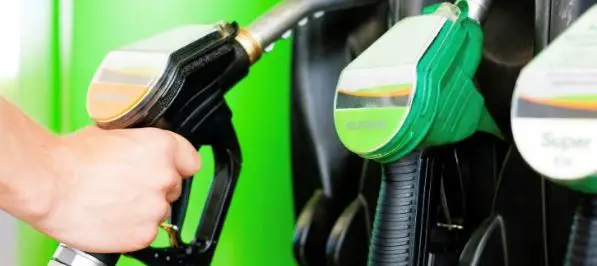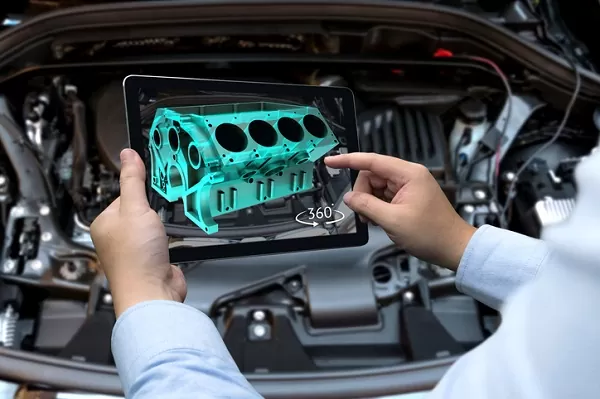Every day, millions of people refuel their vehicles, performing what seems like a simple task: pumping gas. However, there’s an ongoing debate you may have stumbled upon – is it safe or advisable to pump gas with your car on? While the convenience of keeping your car running might be tempting, especially during those frigid winter mornings or scorching summer afternoons, it’s critical to understand the potential implications of this habit.
In the interest of safety, efficiency, and debunking some popular myths, we delve into the subject of pumping gas with your car on. We’ll unpack the potential risks, explore the impact on your vehicle’s fuel efficiency, and address some widely circulated misconceptions.
In doing so, we hope to provide a comprehensive guide to help you make well-informed decisions the next time you’re at the gas station, ensuring both your safety and that of your vehicle. Buckle up and let’s take a deep dive into this common, yet often misunderstood, practice.
Why Some People Pump Gas with Their Car On
Despite the advice to the contrary, many drivers find themselves pumping gas with their car still running. But why is this such a common practice? The reasons can range from simple convenience to a lack of understanding about the potential risks involved.
- Convenience: For many, keeping the car running while pumping gas is about convenience. Perhaps you want to keep the air conditioning or heating running due to extreme weather conditions. Or you might have passengers in the car—children or pets, for example—who you don’t want to leave in an unpowered vehicle.
- Misconceptions: There’s a lot of misinformation out there, which can often lead to misunderstandings about the risks involved in pumping gas with the car on. Some people believe that modern cars are immune to the problems older vehicles might have faced in this situation.
- Habit: For others, it might simply be a matter of habit or unawareness. Some people might not even realize they are supposed to turn off their cars while refueling, especially if they’ve never been taught the correct procedure.
Understanding these motivations is the first step in addressing the prevalent issue of keeping a car running during refueling. As we delve deeper into the safety risks and impacts on fuel efficiency in the following sections, it will become clearer why turning off your car during refueling is so essential.
Understanding the Gas Pumping Process
Before delving into the potential risks of keeping your car on while pumping gas, it’s important to understand the basic process of gas pumping. This will help you better understand how your actions can affect both your vehicle and your safety.
- Gas Pump Components: At the heart of the gas pumping process is the gas pump itself, comprised of the pump and the nozzle. The pump is responsible for moving the gas from the station’s tanks into your vehicle. The nozzle, on the other hand, acts as a conduit for the gas and is designed with safety measures like an automatic shut-off to prevent overfilling.
- Fueling: When you insert the nozzle into your vehicle’s gas tank and begin to pump, fuel is drawn from the station’s underground tanks. It travels up into the pump, through the nozzle, and finally into your vehicle’s gas tank.
- Vapors: During refueling, gasoline vapors can escape from your car’s gas tank back up into the pump nozzle. Most modern pumps are equipped with a vapor recovery system that collects these vapors and returns them to the underground tank, preventing them from being released into the atmosphere.
Understanding this process underscores the importance of safety while refueling your car. Even minor disruptions to this process—like the potential for sparks from a running car—can lead to significant safety risks. In the next section, we’ll further explore these potential hazards and why experts advise against keeping your car running while pumping gas.
What Happens If You Pump Gas With The Car On?
When you pump gas with your car on, you encounter several safety risks. These primarily arise from the potential for sparks from your car’s electrical system or static electricity, which can ignite gas fumes and lead to a fire. Your car’s fuel metering system could also be affected, resulting in potential damage over time.
Risk of Fire
Cars are equipped with numerous electronic systems that can produce sparks. When the car is running, the alternator is actively generating electricity, which could potentially create sparks. Furthermore, static electricity built up by the running components of the car might also trigger a spark. If these sparks come into contact with gasoline fumes, a fire could ensue. Although the risk is relatively low, the consequences could be devastating.
Static Electricity
While not specific to a running car, the build-up of static electricity is another safety concern. Moving in and out of your car during refueling can generate static electricity. If not discharged before touching the pump, a spark could ignite the gasoline vapors. Keeping the car running increases the chances of static build-up.
Potential Damage to Car Components
Aside from the risk of fire, pumping gas with the car running could potentially harm the car’s components. For instance, the car’s evaporative emissions system, designed to prevent gas fumes from escaping into the atmosphere, might malfunction if the car is running while gas is being added. This can result in damage over time, including the malfunctioning of the catalytic converter.
Fuel Metering Errors
Lastly, the fuel metering systems in many modern cars may not accurately gauge the amount of gas you’re adding if the engine is running. This can lead to inaccurate readings on your fuel gauge.
In conclusion, while the immediate danger may seem minimal, there are very real risks associated with pumping gas with the car running. This is why experts and safety guidelines universally recommend turning your vehicle off before starting the refueling process. Safety should always come first, no matter how small the perceived risk.
Is It Illegal to Pump Gas While Your Car Is Running?
While it may not be illegal to pump gas with your car running in all jurisdictions, many states and countries have regulations and guidelines that strongly advise against it for safety reasons. Some locations may indeed have laws that explicitly prohibit this practice. It is always recommended to check with your local laws and guidelines for the most accurate information.
Varied Laws and Regulations Laws and regulations around this practice can vary greatly from place to place. In some U.S. states, it’s simply advised against, while in others it may be explicitly illegal. In many European countries, for instance, refueling with the engine running is generally considered a violation.
Gas Station Policies Aside from local laws and regulations, individual gas station policies also come into play. Many have clear rules prohibiting customers from pumping gas while their engine is running, mainly due to the safety risks associated with the practice. Violation of these rules can result in being barred from the station.
Mythbusters – Debunking Myths Surrounding Pumping Gas with Car On
Throughout the years, a variety of myths have circulated regarding the practice of pumping gas with the car on. Let’s address some of these misconceptions and provide factual information to ensure safe and efficient refueling.
Myth 1: Modern Cars Are Designed to Handle It While it’s true that modern cars are equipped with advanced features and technologies, they are not specifically designed to be refueled while running. The potential for static electricity, sparks, and damage to the vehicle’s systems remains. This myth overlooks the basic safety protocols recommended by vehicle manufacturers and safety experts.
Myth 2: It Doesn’t Affect Fuel Efficiency Some believe that leaving your car on doesn’t impact the fuel efficiency when refueling. However, an idling car uses up fuel. Though the amount may seem insignificant, frequent occurrences can add up over time, affecting your overall fuel efficiency.
Myth 3: It’s Safe If Nothing Has Happened So Far Just because an incident hasn’t occurred doesn’t guarantee future safety. This argument is akin to playing a game of chance with your safety and the safety of others around you. It’s crucial to understand that while risks might be low, the resulting incidents from this practice can be dangerous and life-threatening.
Best Practices for Pumping Gas Safely and Efficiently
When it comes to refueling your vehicle, following best practices is the key to ensuring both safety and efficiency. Here’s a guide to help you navigate your next trip to the gas station:
Turn Off Your Engine
As we’ve discussed throughout this article, it’s essential to turn off your car engine while refueling. Not only does this minimize potential safety risks, but it also helps prevent potential damage to your car’s systems.
Avoid Smoking, Sparks, and Flames
Gasoline fumes can ignite easily. Hence, ensure you don’t light up a cigarette, match, or lighter while you’re pumping gas. It’s also crucial to avoid any other sources of sparks or flames.
Don’t Overfill Your Tank
Once the gas pump automatically shuts off, resist the urge to add more gas. Overfilling can lead to spills, which pose both a safety and environmental risk. It can also damage your car’s evaporative emissions system.
Use Approved Portable Containers
If you’re filling up a portable gas container, ensure it’s approved for gasoline storage. Place it on the ground while filling to prevent static electricity build-up.
Stay Near Your Vehicle
During refueling, it’s advisable to stay close to your vehicle and the fuel pump. This way, you can act quickly in case of any problems.
Touch Your Vehicle Before Touching the Pump
To discharge any potential static electricity build-up, touch a metal part of your car away from the gas tank before touching the gas pump.
Pumping Gas Safely FAQ
Q1:Can I Leave the Gas Station While My Car is Being Fueled? While it may be tempting to pop into the convenience store while your car is refueling, it is not advisable. It’s best to remain near your vehicle while it’s being fueled to quickly address any potential issues that may arise.
Q2: What Should I Do if Gasoline Spills on the Ground While I’m Pumping? If you accidentally spill gasoline while pumping, immediately stop fueling. Notify the gas station attendant who will take the appropriate steps to clean up the spill safely. Avoid any potential ignition sources and do not attempt to clean the spill yourself.
Q3: Is It More Fuel-Efficient to Refuel When My Tank is Almost Empty or Half Full? It’s generally more efficient to refuel when your tank reaches about a quarter full. Waiting until it’s almost empty may force your vehicle to work harder, potentially straining the fuel pump.
Q4: What is the Safest Time to Refuel My Car? Safety doesn’t depend on the time of day but rather on following the proper procedures every time you refuel. That said, refueling in the cooler temperatures of early morning or late evening can reduce gas evaporation.
Q5: Can I Use My Mobile Phone While Pumping Gas? Although there’s debate about this, it’s best to err on the side of caution and not use your mobile phone while pumping gas. While the chances are extremely low, there’s a small potential risk that a spark from your phone’s battery could ignite gasoline vapors.
Remember, when in doubt, always prioritize safety and check with your local laws and regulations.











